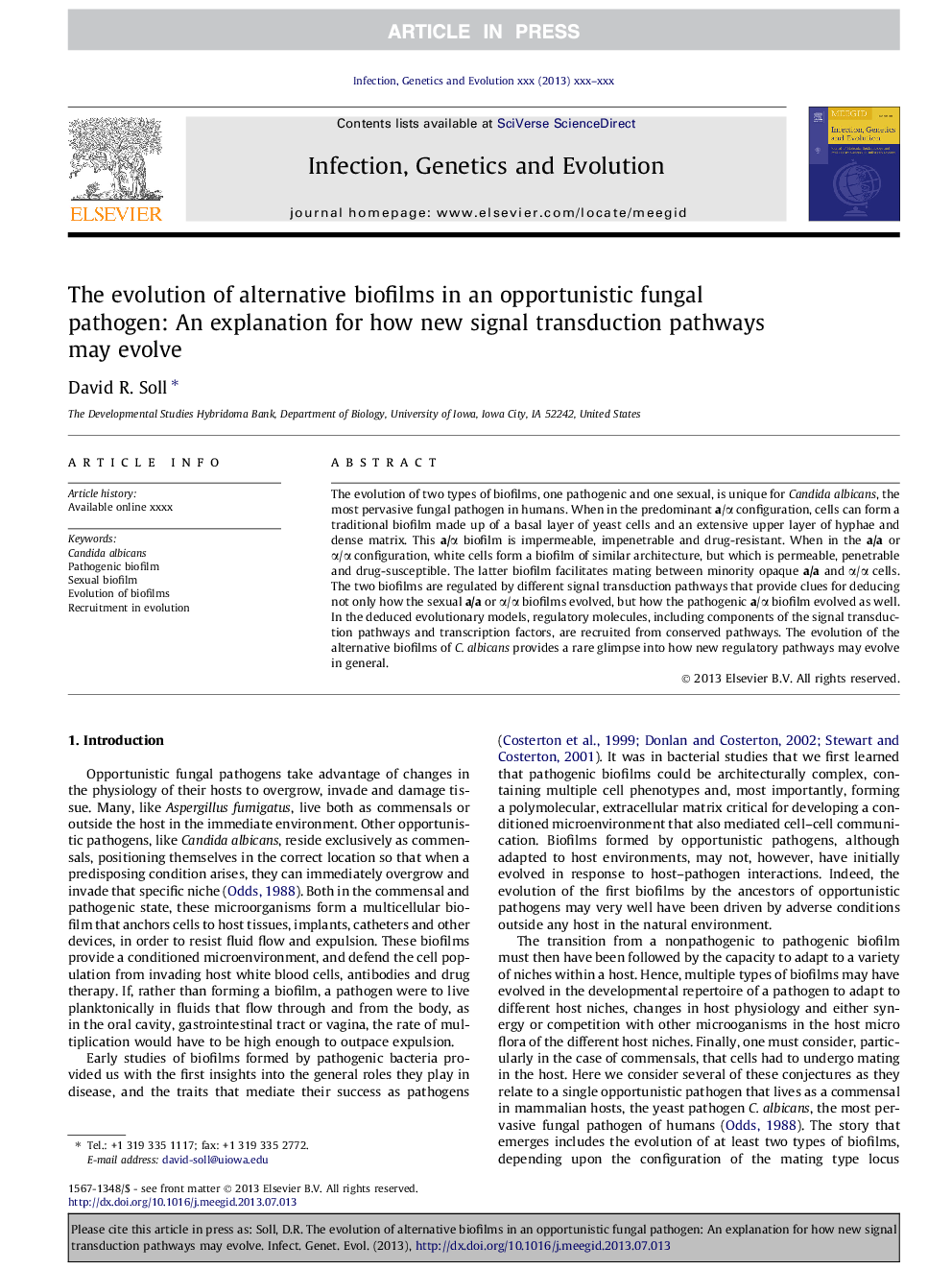| کد مقاله | کد نشریه | سال انتشار | مقاله انگلیسی | نسخه تمام متن |
|---|---|---|---|---|
| 5910139 | 1570181 | 2014 | 9 صفحه PDF | دانلود رایگان |
عنوان انگلیسی مقاله ISI
The evolution of alternative biofilms in an opportunistic fungal pathogen: An explanation for how new signal transduction pathways may evolve
ترجمه فارسی عنوان
تکامل بیوفیلمهای جایگزین در پاتوژن فرصت قلب قارچی: توضیح اینکه چگونه مسیرهای انتقال سیگنال جدید ممکن است تکامل یابد
دانلود مقاله + سفارش ترجمه
دانلود مقاله ISI انگلیسی
رایگان برای ایرانیان
کلمات کلیدی
کاندیدا آلبیکنس، بیوفیلم پاتوژنیک، بیوفیلم جنسی، تکامل بیوفیلم ها، استخدام در تکامل،
موضوعات مرتبط
علوم زیستی و بیوفناوری
علوم کشاورزی و بیولوژیک
بوم شناسی، تکامل، رفتار و سامانه شناسی
چکیده انگلیسی
The evolution of two types of biofilms, one pathogenic and one sexual, is unique for Candida albicans, the most pervasive fungal pathogen in humans. When in the predominant a/α configuration, cells can form a traditional biofilm made up of a basal layer of yeast cells and an extensive upper layer of hyphae and dense matrix. This a/α biofilm is impermeable, impenetrable and drug-resistant. When in the a/a or α/α configuration, white cells form a biofilm of similar architecture, but which is permeable, penetrable and drug-susceptible. The latter biofilm facilitates mating between minority opaque a/a and α/α cells. The two biofilms are regulated by different signal transduction pathways that provide clues for deducing not only how the sexual a/a or α/α biofilms evolved, but how the pathogenic a/α biofilm evolved as well. In the deduced evolutionary models, regulatory molecules, including components of the signal transduction pathways and transcription factors, are recruited from conserved pathways. The evolution of the alternative biofilms of C. albicans provides a rare glimpse into how new regulatory pathways may evolve in general.
ناشر
Database: Elsevier - ScienceDirect (ساینس دایرکت)
Journal: Infection, Genetics and Evolution - Volume 22, March 2014, Pages 235-243
Journal: Infection, Genetics and Evolution - Volume 22, March 2014, Pages 235-243
نویسندگان
David R. Soll,
